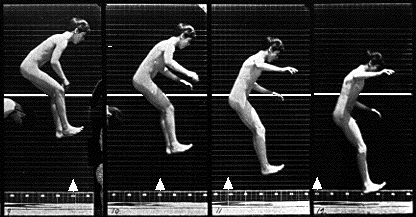
Fashioning the Body: Versions of the Citizen, the Self, and the Subject
The Evergreen State College | Fall 2007-Winter 2008
User Login |
Beauty Parlor 19 Oct Presentation write up (part III)I would also like to talk about Michel Foucault’s words, more specifically the part of the quote that talks about the representation, and the theory of power. "At bottom, despite the differences in epochs and objectives, the representation of power has remained under the spell of monarchy. In political thought and analysis, we still have not cut off the head of the king. Hence the importance that the theory of power gives to the problem of right and violence, law and illegality, freedom and will, and especially the state and sovereignty (even if the latter is questioned insofar as it is personified in a collective being and no longer a sovereign individual). To conceive of power on the basis of these problems is to conceive of it in terms of a historical form that is characteristic of our societies: the juridical monarchy." I found the Capital building to be very representative of the power that we perceive the government of possessing, and a clear reminder of the laws under which we live. This is the place that legislation comes to us from, this is where important decisions regarding our bodies are made. Law and illegality, freedom and will, and especially the state and sovereignty can be seen as physically manifested in the symbol of the Capital as that monarchical “head.” A place so representative of power is bound to have an effect on the bodies within it’s walls. I found that the bodies inside the Capital Building seemed to have internalized the power they found represented within the structure. During my time at the Capital I paid careful attention to how bodies were reacting to the building, and what their movements portrayed about what was going on internally for them. From what I observed from peoples’ behavior within the space, such as behaving as though they’re in a museum rather than a public space, signaled that they have internalized what this structure represents- namely power, and specifically that of the government. Most people, unlike Foucault, think of power in terms of a hierarchy, with that power being wielded upon them from above. The Government is an embodiment of power, and also a symbol of the hierarchy that they perceive. Because of this, such an ornate building dedicated to our state Government as a representation of power changes the way people behave within it’s walls. There are many cues within the building that one can easily relate to power. The amount of money spent on the ornaments of the building such as the Tiffany chandeliers, the enormous carpets, the Capital dome, the wide open spaces at the center of the building and the large hallways that are rather intimidating, and very directing. The vast rooms in which the Senate and the House meet are almost sacred- only those who are part of these elected bodies are able to step onto the floor, everyone else may watch from the small galleries on either side on the floor above. Even the main doors that one enters through has an impact on how this place is perceived. The doors stretch upwards, far taller than is necessary, but are not wide enough to let two people pass through comfortably. Instead we are moved in single file to the lobby. Within the building are two distinct groups of people, those there as tourists, and those who were there on business. The two were readily distinguishable by both their behavior and dress. Those who were there to explore the building and learn about it’s history were casually dressed. Most were wearing jeans and sweaters, or sweatshirts. Though casual they were still well put together, and not sloppy. They milled around the lobby reading brochures, looking at the statues and chandeliers and talking with their companions in hushed museum quality, voices. Those who were there for business presented themselves much differently; they wore business suits and ties or dresses and heels. They walked through the lobby purposefully and onto their final destinations within the structure. As our tour group moved throughout the building our footsteps and voices echoed off the shining marble walls and staircases. People were generally silent, listening intently to the tour guide keeping close to themselves with a respectful distance from those they didn’t personally know. When we paused to talk about a particular room, or ornament of the building people would generally form a semi-circle around the guide as she spoke. Many kept their hands in their pockets, or crossed over their chests lest they touch something that they were not “allowed” to. There were no noticeable differences in the way that men and women behaved within this space. They all seemed aware that there was an unstated code of behavior, and they were conscious of their movements, the volume of their voice and what was “appropriate” in such a setting. The only guidelines of behavior set out in the building was the occasional “no admittance,” “authorized personnel only” and “no cell phones” signs dotted here and there throughout the building. There were no other guidelines given verbally by the woman greeting people at the front desk, or our tour guide. It seems that the internalization of the solemnity of the building, and the perceived oppressive nature of our government’s power was enough to dictate how bodies moved, interacted, and behaved within this immense Grecian structure.
Submitted by Kendall on Mon, 10/22/2007 - 5:29pm. Kendall's blog | login or register to post comments | printer friendly version
|
Who's onlineThere are currently 0 users and 1 guest online.
Events
|
|||||||||||||||||||||||||||||||||||||||||||||||||
